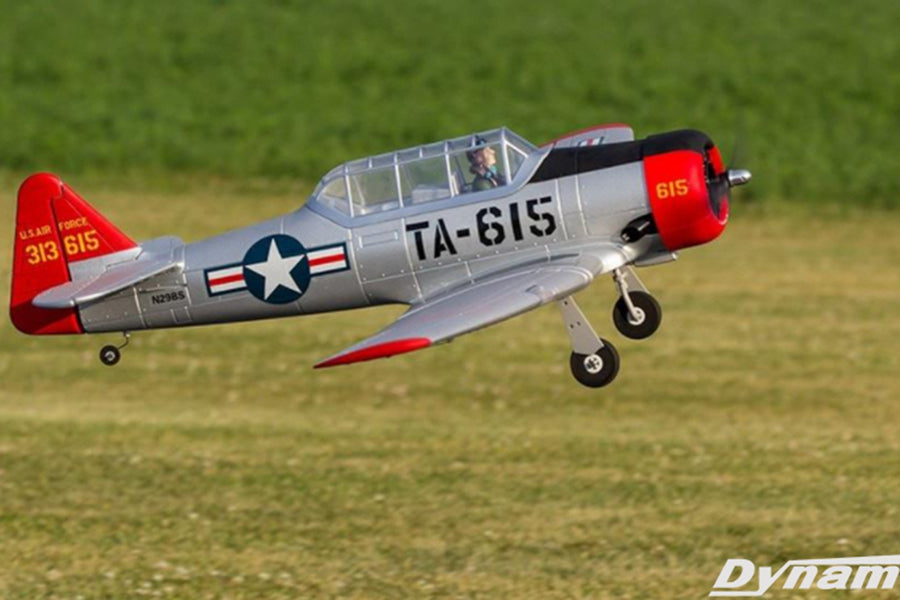Flying RC airplanes is an exhilarating hobby, but mastering key maneuvers like takeoff and landing can make the difference between an enjoyable flight and a costly crash. As someone who has spent years flying various RC models, including the Dynam AT-6 Texan V3 4S RC Warbird with a 1400mm wingspan, I can tell you that takeoff and landing are skills that improve significantly with practice and understanding of the aircraft’s dynamics. In this guide, I’ll share expert tips on how to master these critical flight phases and some personal insights from my experiences with the Dynam AT-6 Texan V3.
Understanding the Basics: Takeoff and Landing
Before we dive into specific tips, it’s important to understand why takeoff and landing are so crucial. These are the two phases of flight where most RC airplanes accidents occur, particularly for beginners. The key to mastering both is smooth control inputs, awareness of the aircraft’s behavior, and a solid understanding of the wind and runway conditions.
The Importance of the Right Aircraft
Choosing the right model is fundamental to your success. For instance, I’ve spent a lot of time flying the Dynam AT-6 Texan V3, a 4S warbird that is an excellent blend of power and agility. This model, with its 1400mm wingspan and 3-position flaps, provides a great learning platform for takeoff and landing. It’s stable enough for beginners yet advanced enough to challenge you as you progress.
Mastering the Takeoff
Takeoff is an exciting but delicate maneuver. For a smooth and successful takeoff, you need to follow these essential steps:
1. Pre-Flight Checks
- Battery: Ensure your battery is fully charged and properly secured in place.
- Control Surfaces: Verify that the ailerons, elevators, and rudders are moving freely and correctly.
- Flaps: For planes with flaps, like the Dynam AT-6 Texan V3, make sure they are in the correct position. You may start with flaps in the “Up” position for a more rapid takeoff.
- Propeller: Check that the propeller is free of any obstructions.
2. Wind Conditions
- Headwind: Take off into the wind whenever possible. A headwind provides additional lift and shortens your takeoff roll, making it easier to get airborne.
- Crosswind: If the wind is crosswise, be extra cautious. Crosswinds can cause the aircraft to veer off course as you accelerate.
3. Throttle and Acceleration
- Gradually increase throttle to avoid nose-over accidents. Applying too much throttle too quickly can cause the nose to pitch up suddenly, while too little throttle can result in a sluggish takeoff.
- The Dynam AT-6 Texan V3 has a powerful 4S motor, so you’ll need to be smooth but assertive with your throttle inputs.
4. Liftoff
- As you reach the appropriate speed (often indicated by the plane’s attitude or visual cues), gently pull back on the elevator to lift the nose.
- For warbirds like the AT-6 Texan, avoid pulling too aggressively as it may cause the plane to stall. A gentle pull-up gives you the lift you need without overloading the wings.
5. Climbing Out
- Once airborne, retract your flaps (if deployed) and begin a shallow climb to gain altitude.
- Monitor the plane’s attitude carefully. If you find yourself climbing too steeply, ease off the elevator slightly to maintain a safe angle of ascent.
Landing: The Art of a Smooth Touchdown
Landing, for many, is the trickiest part of flying an RC airplane. However, with the right techniques, it can become just as satisfying as takeoff.
1. Approaching the Runway
- Landing Gear: Before beginning your descent, make sure the landing gear is down (if retractable) and locked in place.
- Flaps: Deploy flaps as necessary. For the Dynam AT-6 Texan V3, I typically extend flaps to the first or second position when preparing for landing, which provides greater lift and helps slow the plane down.
- Final Approach: Begin your approach from a safe altitude, ideally 300-400 feet above the ground. Align yourself with the runway or landing area.
2. Throttle Management
- Reducing throttle too early can result in a hard landing or even a stall, so manage your speed carefully.
- Throttle Cut: As you approach the runway, gradually reduce throttle to idle. Maintain a steady descent rate and keep the nose slightly above the horizon.
3. Touchdown
- Keep the plane on a shallow descent angle, and as you approach the runway, aim to land on the main wheels first.
- As the aircraft nears the ground, gently pull back on the elevator to “flare” the plane. This reduces your descent rate and softens the touchdown.
4. Post-Landing
- Once your plane is on the ground, gently apply rudder input to keep the airplane aligned with the runway.
- Taxi off to the side and shut down the throttle.
Common Challenges During Takeoff and Landing
Even with all the preparation, you may encounter challenges while trying to land or take off. Below are some of the most common issues and solutions:
| Challenge | Solution |
|---|---|
| Nose Over During Takeoff | Use less throttle and gradually apply elevator input. |
| Stalling During Climb | Ensure you’re not pulling the nose up too sharply. Use gentle inputs. |
| Hard Landing | Manage your speed carefully, use flaps for smoother descent, and flare properly. |
| Crosswind Landing | Use rudder to counteract drift and ensure a straight descent. |
Frequently Asked Questions (FAQ)
1. How do I know when to deploy flaps for landing?
Flaps should generally be deployed when you’re within 1/3 to 1/2 of the distance from the runway. For the Dynam AT-6 Texan V3, I usually deploy flaps to the first or second setting, depending on the wind conditions and how much lift I need.
2. What’s the best way to prevent a stall on takeoff?
The key to preventing a stall on takeoff is smooth, gradual elevator inputs. Avoid pulling back too aggressively on the stick when reaching takeoff speed. Instead, ease into the climb and let the airplane lift itself naturally.
3. What do I do if my plane starts veering off course during takeoff?
If your plane starts veering off course, gently apply rudder to straighten it. Don’t panic—over-correcting can cause the plane to roll or spiral. Small adjustments are key.
4. Should I practice landings with flaps deployed?
Yes, practicing with flaps deployed is essential, especially if you’re flying a model like the AT-6 Texan V3 that has a large wing and requires flaps to manage slow-speed landings.
5. How do I handle gusty winds during landing?
When landing in gusty winds, approach the runway at a slightly higher speed to avoid stalling. You may need to adjust your angle of descent during wind gusts to maintain control.
Conclusion: Patience and Practice Make Perfect
Mastering takeoff and landing is an ongoing learning process, and even seasoned RC pilots make mistakes from time to time. With patience and plenty of practice, you’ll develop the confidence to land smoothly and take off with ease. Whether you’re flying a beginner-friendly trainer or a more advanced model like the Dynam AT-6 Texan V3, the fundamental principles remain the same.
I encourage you to take your time and develop a routine for each flight phase. Be sure to practice regularly, especially in ideal weather conditions, and you’ll soon find yourself enjoying the thrill of a perfect takeoff and landing every time.
Happy flying, and may your RC plane always stay level in the sky!




